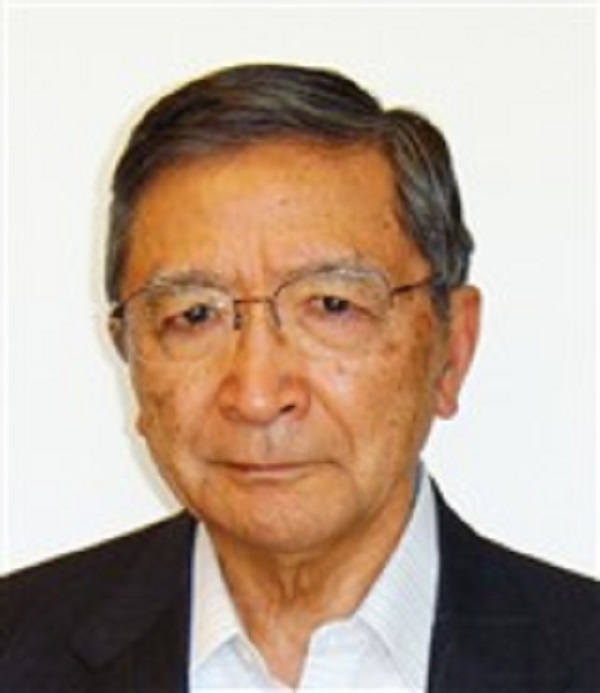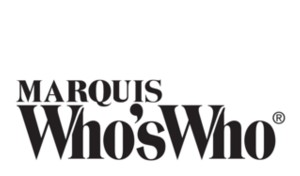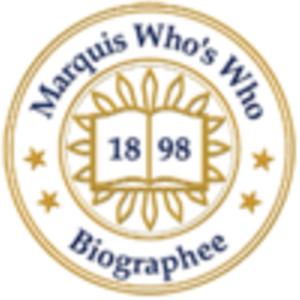HONOLULU, HI, December 04, 2017 /24-7PressRelease/ -- Marquis Who's Who, the world's premier publisher of biographical profiles, is proud to present Ryuji Yamada, PhD, with the Albert Nelson Marquis Lifetime Achievement Award. An accomplished listee, Dr. Yamada celebrates many years' experience in his professional network, and has been noted for achievements, leadership qualities, and the credentials and successes he has accrued in his field. As in all Marquis Who's Who biographical volumes, individuals profiled are selected on the basis of current reference value. Factors such as position, noteworthy accomplishments, visibility, and prominence in a field are all taken into account during the selection process.
A widely renowned high energy physicist, Dr. Yamada has made noted contributions in the fields of accelerator, detector, and physics data analysis, as well as in superconducting magnets. He is credited with the successful construction of 200 Bev Main Ring accelerator in 1972, the discovery of the Top Quark in 1995 with D0 data, as well as the analysis for the evidence of Higgs particle with D0 data. He also contributed to the development of superconducting Tevatron magnets, and the CDF and D0 superconducting solenoidal detector magnets. He also contributed to the development of new high field superconducting materials, Nb3Sn and Nb3AI, as well as to magnets made with these materials. Since 2012, Dr. Yamada has been recognized as a scientist emeritus with Fermilab. Including his association with other laboratories, he worked as a physicist over 60 years.
Prior to pursuing a career in physics, Dr. Yamada received a Bachelor of Science from Hiroshima University in 1954. He went on to attend the University of Tokyo, where in 1956 he received a Master of Science, for which he constructed a 16 inch cyclotron. He received a PhD in Physics in 1962 from University of Tokyo.
From 1956 to 1968, Dr. Yamada served as a tenured research associate with the Institute of Nuclear Study, University of Tokyo. During this period, he worked on the construction of the first Japanese High Energy accelerator, a 1-GeV electron synchrotron. He worked on the magnet system and contributed substantially to its successful initial operation. He also invented a new beam intensity monitor, which was very useful for the initial operation, and it became the basis of his doctorate. He then joined one of the high energy experimental groups.
While working at the University of Tokyo, Dr. Yamada was on sabbatical for three years. As a research associate for two years, 1963 - 1965, at the Brookhaven National Laboratory, he joined the Ozaki-Lindenbaum group, doing forward scattering experiments, using beams from 30 GeV AGS. He spent another year, 1965 -1966, at Cornell University designing and constructing 9 GeV electron synchrotron magnets.
His consulting positions, include serving as a consultant with the National Accelerator Laboratory (NAL, later Fermilab) in 1967, where he proposed building a collider from the beginning, using magnets with two beams. The director, however, insisted on starting with a simple accelerator, the Main Ring Accelerator. Dr. Yamada later served as a consultant to Japan's High Energy Physics Laboratory, KEK, in 1982, when they started the TRISTAN project and the US-Japan collaboration project.
Dr. Yamada initially joined Fermilab in 1968 when he accepted a position as a physicist with the Fermi National Accelerator Laboratory in Batavia, Illinois at the invitation of the newly selected Director Robert Wilson. Recognized as Fermilab's first Japanese researcher, he was instrumental in the critical establishment of America's particle physics and accelerator laboratory. He was essential to the successful initial operation of the Main Ring project, which went through a very serious crisis in the development of the laboratory. With the achievement of 200 GeV beam in March 1972, before the scheduled date and within budget, the Main Ring became the world's most powerful accelerator, surpassing the Russian 76 GeV accelerator. Because of the initial magnet design work by Dr. Yamada, the Main Ring beam achieved 500 GeV in 1976 by just increasing the current. Once the Main Ring operation was stabilized, he joined Experiment E-36, one of the first experiments at Fermilab. It was the first US-USSR collaboration experiment, undertaken during the Cold War period. By the early 1970s, Dr. Yamada was noted for his invaluable contributions to Fermilab's successful high-energy physics program.
Once the director decided to start the superconducting magnet project at Fermilab for a future larger scale accelerator, Dr. Yamada formed a magnet measurement group in order to initiate R & D of the characteristics of the NbTi strand and its cables, as well as the superconducting model and full-scale magnets. The group eventually became the Magnet Test Facility (MTF). All of the Energy Doubler Magnets, over 1,000 magnets were tested successfully. These magnets became the major component of the Tevatron project. During 1970s and early 1980s, American national laboratories and international laboratories competed to develop superconducting magnets for large scale accelerator projects. Fermilab bested its competition by developing the Tevatron, the first large scale superconducting accelerator, which was used in the discovery of Top Quark. Dr. Yamada was one of the key personnel at Fermilab in the development of the superconducting accelerator magnets of the Tevatron, along with the unique development of the CDF and D0 superconducting detector solenoids.
When the Tevatron Magnets were being processed at MTF routinely, Dr. Yamada joined the CDF experiment group at the end of 1978. This big international CDF group was just started to construct the first collider detector at Fermilab. As he was already an expert on superconductivity, he joined to design a thin-walled superconducting detector solenoid. He then proposed to manufacture the CDF solenoid at Hitachi Ltd., utilizing the US-Japan collaboration fund. Later he designed its field measurement equipment and carried out all of its field measurements. He incorporated a couple of new ideas of using the outer coil bobbin for restraining the outward force, and heat-shrink-fitting assembly method during the coil assembly. A superconductor coextruded with pure aluminum was used, an innovation by Hitachi Cable Ltd. With these elements, the CDF solenoid worked over 20 years without any major trouble, and became one of the successful standard designs for detector solenoids.
When the second collider detector D0, was started in 1983, Dr. Yamada joined the D0 experimental group, suggesting using a Uranium Liquid Argon calorimeter, to make a compact and hermetic detector for better energy resolution. Eventually he worked on the construction of the muon detector system and performed extensive magnetic field calculations for the D0 detector. He also designed its superconducting 2 Tesla thin D0 solenoid for the Run II upgrade experiment.
When the D0 detector was ready to produce experimental data in Run I in the early 1990s, Dr. Yamada concentrated on top data analysis, using the D0 data. He used the All-jet channel, because it has the largest top event numbers, and because all six resultant jets were available to calculate the top quark mass. The other advantage of this channel was that the resultant components did not have any major neutrino component, except c-tagging. In 1994, a year before the official year of the top discovery, using a few common analysis cuts, he demonstrated to the D0 Top group that the top mass was around 170 GeV. He presented many times within the D0 group, and wrote three D0 notes and one note about c-tagging. At that time, many of D0 Top group members believed that the All-jet channel was full of background events. At that time, the CDF group was estimating the Top mass to be approximately 172 GeV. The D0 group, however, did not understand Dr. Yamada's simple analysis, and prohibited him from presenting his data at any outside meetings or conferences. At that time, some of the D0 members were eager to publicize a Top mass value quite different from that of the CDF value. The episode demonstrates the mistakes that can be made when a large experimental group jointly conducts an analysis.
Early in the 2000s, after the demise of Superconducting Super-Collider (SSC), the high energy physics community in the USA was at a standstill. During this period, Dr. Yamada worked with Prof. Takayama at KEK to design a very high intensity 63 TeV accelerator, based on two stage accelerator rings using a pipe-tron magnet ring, and a high field superconducting magnet ring, utilizing the Tevatron as the injector. The acceleration of the proton beam was done with the induction acceleration to increase the beam intensity, a technique which was being developed at KEK at that time. For the high field magnets, a new superconducting material was needed, as NbTi could not provide a high field above 10 Tesla. During mid-2000s, Dr. Yamada worked in the High Field Magnet Group at Fermilab, developing Nb3Sn superconducting cables as well as on magnet data analysis of Nb3Sn model magnets. Dr. Yamada also developed advanced and detailed 3-D Quench calculations of these model magnets with extensive computer programming, using ANSYS and COMSOL, collaborating with Prof. Wake at KEK.
In 2005, Dr. Yamada initiated an international collaboration with the National Institute for Materials Science (NIMS) of Japan, together with Dr. A. Kikuchi for the R & D of the Nb3Al superconductor and its cable for their application in high field accelerator magnets. Dr. Yamada performed extensive research on their characteristics, and found advantages over the Nb3Sn strand and cables. As it is alloy material, it can stand much stronger stress than Nb3Sn cable. For this contribution, Dr. Yamada and his collaborators received the Japanese Superconductor Association prize in 2010.
The D0 experiment Run II started in 2002 with an upgraded setup. It ran through the end of the Tevatron in 2011. For this run the D0 group used the newly installed 2 Tesla detector solenoid, designed by Dr. Yamada and built by Toshiba Ltd. During Run II, Dr. Yamada, and many D0 physicists concentrated on the discovery of the Higgs boson. Dr. Yamada investigated Higgs particle using the WH -_ l + n + b-bbar channel. Due to the low production cross section rate, the D0 as well CDF groups could obtain "evidence of Higgs particle", but not "the discovery of the Higgs particle," which was achieved by Large Hadron Collider (LHC) groups at the European Organization for Nuclear Research (CERN) with a much higher production cross section in 2012.
A respected authority in the field, Dr. Yamada continues to contribute articles to professional journals pertaining to his areas of expertise. Throughout the course of his career over 60 years, Dr. Yamada has been featured in a wide range of honors publications, including Who's Who in America and Who's Who in the Midwest. He maintains involvement with the scientific community as a member of the American Physical Society.
In recognition of outstanding contributions to his profession and the Marquis Who's Who community, Ryuji Yamada, PhD, has been featured on the Albert Nelson Marquis Lifetime Achievement website. Please visit www.ltachievers.com for more information about this honor.
About Marquis Who's Who :
Since 1899, when A. N. Marquis printed the First Edition of Who's Who in America , Marquis Who's Who has chronicled the lives of the most accomplished individuals and innovators from every significant field of endeavor, including politics, business, medicine, law, education, art, religion and entertainment. Today, Who's Who in America remains an essential biographical source for thousands of researchers, journalists, librarians and executive search firms around the world. Marquis publications may be visited at the official Marquis Who's Who website at www.marquiswhoswho.com.
# # #
Contact Information
Fred Marks
Marquis Who's Who Ventures LLC
Berkeley Heights, NJ
USA
Telephone: 844-394-6946
Email: Email Us Here
Website: Visit Our Website




